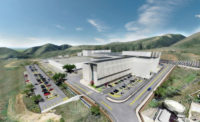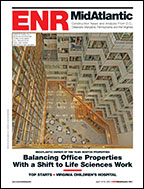...recession. “We felt this would be a good opportunity to move forward,” he says. Along with having saved money from several years of strong revenue, the airport only recently began implementing PFCs. “That gives us a strong source of future revenues that we can apply to bonding,” Murphy says.
Another incentive for launching projects has been the continued drop in construction costs. The price tag for John Wayne’s program has dropped by as much as $100 million over the past year. Similarly, bids for maintenance projects at McCarran International are about 25% below the engineer’s estimate from 2008.
“Our most recent contract, the rehabilitation of Taxiway G, was $12 million, 45% less than had been estimated,” Murphy explains. “The favorable market also enabled us to have the structural steel in place for Terminal 3 four months ahead of schedule.”
Not all projects are profiting from lower prices, however. “We bid everything in 2006, so we were unable to take advantage of the current market,” says Juan Carlos Arteaga, program director for Miami International Airport’s $2.8-billion, 48-gate North Terminal project. Still, he says, the current climate benefits the airport in other ways. “For six recent small projects, we had seven or eight bidders where once there might have been only a couple,” he says. “The bids came in $13 million under budget, which we applied to our contingency fund.”
Jump Start
Also coming to the airports’ aid in recent months has been a $1.1-billion injection of stimulus funding under the American Recovery and Reinvestment Act (ARRA). The dollars have been applied largely to “shovel-ready” projects, such as the Port Authority of New York and New Jersey’s $376.3-million rehabilitation and widening of Runway 13R-31L at John F. Kennedy International Airport, which received a $15-million stimulus grant. DIA is using its $12-million stimulus grant to replace concrete panels on Runway 17L/35R, repair pavement joints between concrete panels and install new drains on the airfield ramp. Meanwhile, in Pennsylvania, repairs to Runway 14-12 at Pittsburgh International Airport are being funded with $10 million in stimulus money.
ARRA’s airport assistance was particularly welcome, given that Congress has yet to act on reauthorizing the FAA’s Airport Improvement Program (AIP), which expired in September 2008. In May, the House approved a measure calling for $12.3 billion in grants over three years. Airports also would be allowed to increase PFCs from the current limit of $4.50 per flight segment to $7.00. The Senate has yet to vote on its version, but Oswald says reluctance to boost PFCs could keep reauthorization in a holding pattern for some time. “Airports cannot plan ahead because they do not know what their PFC revenue will be, exacerbating an already uncertain economic climate,” he says.
For now, airports with construction agendas will have to stay focused on a host of macro- and micro-level economic and industry trends while still keeping their projects and operations on track. “Even though things may slow, the industry we work in is very dynamic,” says Arteaga. “There is always something new with aircraft, security procedures, operations technology, passenger movement and so on.”
Clark County’s Ryan agrees, saying, “We’ll have to watch carefully what the entire airline industry is doing and stay nimble to respond to changing market conditions.”




Post a comment to this article
Report Abusive Comment